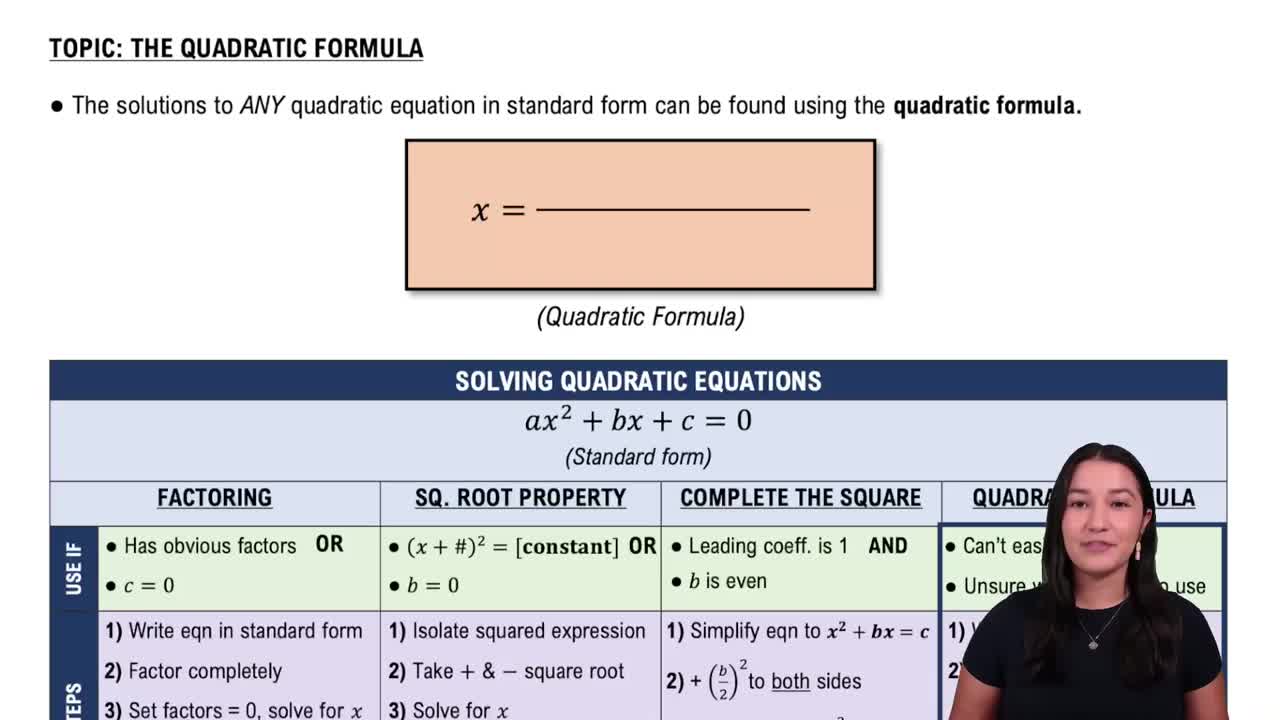Table of contents
- 0. Review of Algebra4h 16m
- 1. Equations & Inequalities3h 18m
- 2. Graphs of Equations43m
- 3. Functions2h 17m
- 4. Polynomial Functions1h 44m
- 5. Rational Functions1h 23m
- 6. Exponential & Logarithmic Functions2h 28m
- 7. Systems of Equations & Matrices4h 6m
- 8. Conic Sections2h 23m
- 9. Sequences, Series, & Induction1h 19m
- 10. Combinatorics & Probability1h 45m
3. Functions
Function Composition
Problem 35b
Textbook Question
In Exercises 31–50, find fg and determine the domain for each function. f(x) = 2x² − x − 3, g (x) = x + 1
 Verified step by step guidance
Verified step by step guidance1
Step 1: Understand the problem. We need to find the composition of two functions, denoted as \( (f \circ g)(x) \), which means we need to substitute \( g(x) \) into \( f(x) \).
Step 2: Substitute \( g(x) = x + 1 \) into \( f(x) = 2x^2 - x - 3 \). This means wherever there is an \( x \) in \( f(x) \), replace it with \( x + 1 \).
Step 3: Write the expression for \( f(g(x)) \): \( f(g(x)) = 2(x + 1)^2 - (x + 1) - 3 \).
Step 4: Expand the expression \( (x + 1)^2 \) to \( x^2 + 2x + 1 \) and substitute back into the equation: \( 2(x^2 + 2x + 1) - (x + 1) - 3 \).
Step 5: Simplify the expression by distributing and combining like terms to find \( f(g(x)) \).
Recommended similar problem, with video answer:
 Verified Solution
Verified SolutionThis video solution was recommended by our tutors as helpful for the problem above
Video duration:
5mPlay a video:
Was this helpful?
Key Concepts
Here are the essential concepts you must grasp in order to answer the question correctly.
Function Composition
Function composition involves combining two functions, where the output of one function becomes the input of another. In this case, fg means f(g(x)), which requires substituting g(x) into f(x). Understanding how to perform this substitution is crucial for finding the composed function.
Recommended video:

Function Composition
Domain of a Function
The domain of a function is the set of all possible input values (x-values) for which the function is defined. When composing functions, the domain of the resulting function fg must consider the domains of both f and g, ensuring that all inputs lead to valid outputs in the context of the composed function.
Recommended video:

Domain Restrictions of Composed Functions
Quadratic Functions
A quadratic function is a polynomial function of degree two, typically expressed in the form f(x) = ax² + bx + c. The function f(x) = 2x² − x − 3 is a quadratic function, and its properties, such as its vertex and intercepts, can influence the overall behavior of the composed function fg and its domain.
Recommended video:

Solving Quadratic Equations Using The Quadratic Formula

 4:56m
4:56mWatch next
Master Function Composition with a bite sized video explanation from Nick Kaneko
Start learningRelated Videos
Related Practice









